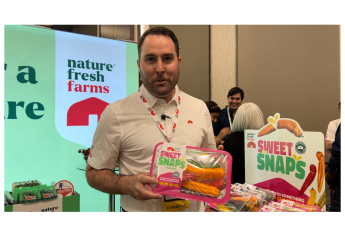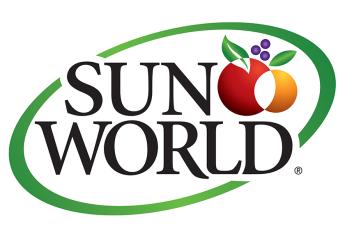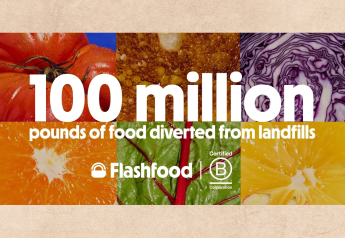Ontario greenhouse-grown produce poised for growth
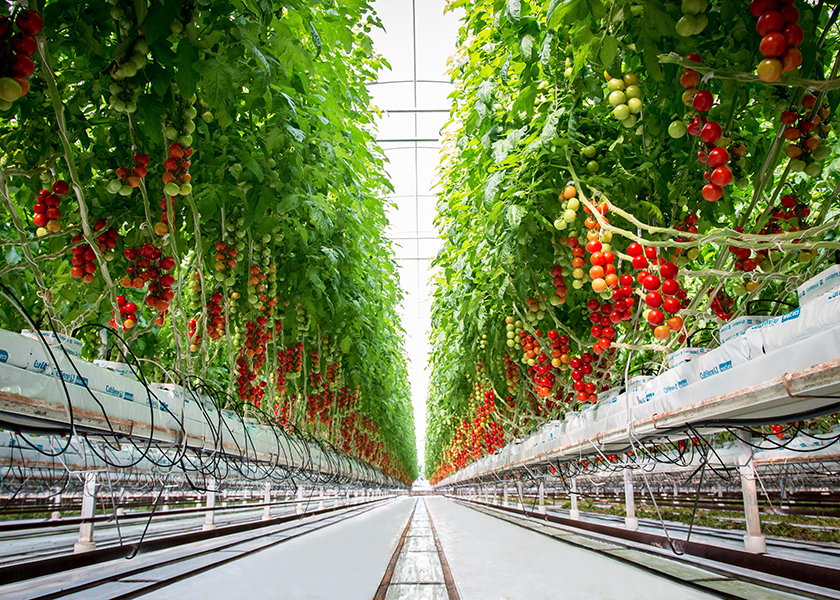
With over 3,800 acres of greenhouses and counting, Ontario dominates Canada’s indoor ag space.
Ontario Greenhouse Vegetable Growers in Leamington represents more than 170 greenhouse farmers, who cultivate cucumbers, tomatoes, peppers and more year-round.
In the past few years, Ontario’s greenhouse growers have expanded and diversified their produce offerings with greenhouse-grown lettuce, berries, eggplant, melons and other fruit and vegetables.
“The greenhouse industry continues to expand year over year with Ontario as the leading supplier of greenhouse tomatoes, peppers and cucumbers to North America,” Richard Lee, executive director for Ontario Greenhouse Vegetable Growers, told The Packer. “We represent over 3,800 acres of greenhouse acreage, which is a 40% increase since 2016, and we project our growth will continue at a rate of 5% to 7% annually to meet the demand and increase in greenhouse product offerings.”
But despite anticipated growth, greenhouse growing is not all controlled environment bliss.
“The current climate of Ontario-grown greenhouse vegetables continues to be a challenge due to inflationary pricing, supply chain disruptions and legislative changes that threaten the future viability and sustainable food production and food security in North America,” he said.
Lee, who recently assumed the role of OGVG executive director, says he intends to lead his team to sustain growth and food security in North America by focusing on three primary areas:
- Competitiveness, climate change policy and international market access.
- Investment and opportunity to expand infrastructure, production and improve supply-chain capacity.
- Risk protection to ensure solvency, manage emerging threats, support resiliency.
“Following the pandemic and post-pandemic recovery, we have learned that the integration and interdependencies of a North American food system are needed,” Lee said. “A good example of this would be the shortage of leafy greens late last year that ultimately impacted Canadian consumers into 2023.”
New consumer campaign
While Lee says the OGVG logo is widely recognized in Canada, many U.S. consumers are unsure what Ontario Greenhouse Vegetable Growers means to them.
To change that, OGVG has launched a new campaign in the U.S. that focuses on educating consumers about the benefits of greenhouse-grown produce. The “This is greenhouse goodness” marketing campaign will focus on “underserved U.S. markets showcasing the benefits of our produce,” Lee said.
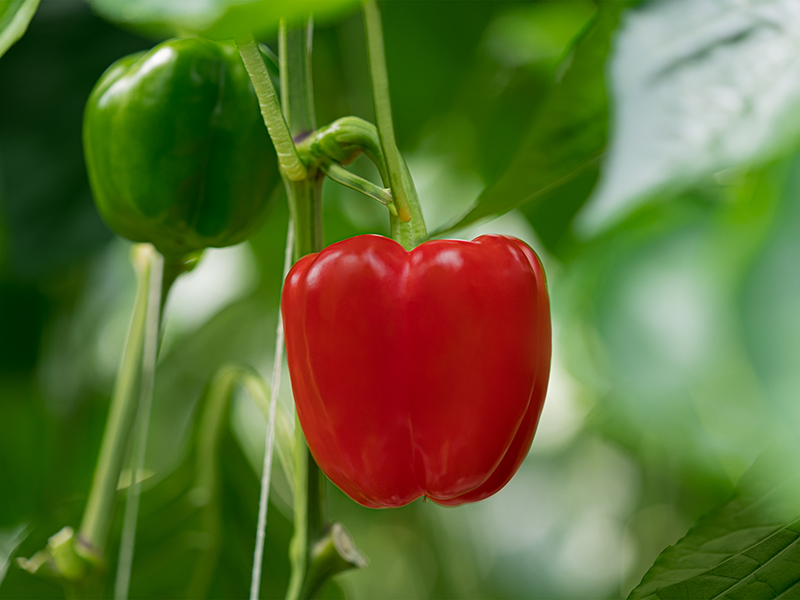
Strength in sustainability
While myriad aspects of greenhouse growing are inherently sustainable — for example, greenhouse growers can yield up to 20 times more produce per square meter using less water than outdoor agriculture, says OGVG — many in the industry are working to further improve their sustainability scorecards.
“One of the biggest trends in greenhouse growing is sustainability,” said Sonia Klinger, marketing manager for Del Fresco Pure, Kingsville, Ontario. “At Del Fresco Pure we are always researching and looking into ways to make sure that we are producing in the most sustainable way with the least amount of waste involved. We added cogeneration units to our greenhouse to help reduce energy waste. We use our co-gens to recycle heat from the steam they put out.”
In pursuit of the most effective growing conditions, Del Fresco Pure monitors its hydroponic greenhouses using computer software and technology to track its water usage, control heat and humidity, and more, Klinger said.
“Del Fresco Pure is always working to deliver fresh produce that looks good, tastes good and has the minimum amount of mileage associated with each item,” said Klinger, adding that the company also continually works on sustainable packaging solutions for its customers.
Sustainability and innovation are also top of mind at Kingsville, Ontario-based Red Sun Farms.
“In 2023 Red Sun Farms will continue to focus on our food safety, quality and year-round supply, while investing in sustainability and innovation,” said Red Sun Farms Director of Marketing and Packaging Leona Neill.
As part of its innovation initiatives, Red Sun Farms is working on improvements to existing tomato varieties, as well as some new varieties outside of the tomato category, Neill said. The greenhouse grower also is working with technology providers to improve growing conditions via light technology and invest in innovations to automate its operations to supply the market, she added.
“Red Sun Farms will continue to stay true to our ‘Seed to Plate’ commitment, owning every step of the process — seed selection, propagation at the farms, greenhouse operations, harvesting, packing and distribution,” Neill said.
At Great Lakes Greenhouses, Leamington, Ontario, becoming more sustainable means sustainable packaging.
“Our focus this year is to incorporate more sustainable packaging options into our product mix,” said Vice President of Sales Jeff Richardson. “We have been working diligently with our suppliers to produce more sustainable options without taking costs up significantly. This will help us reduce our carbon footprint.”
Related news: Pure Flavor continues expansion by acquiring Cervini Farms C5
Expanded greenhouse offerings
For Matt Quiring, senior vice president of sales and marketing for the Leamington-based Nature Fresh Farms, greenhouse farmers’ ability to maximize space to increase yield and grow year-round and closer to the consumer with less environmental impact is driving growth in greenhouse commodities.
Further driving growth is the expansion of greenhouse-grown produce beyond tomatoes, peppers and cucumbers.
“Over this and coming years, I expect that you will see exponential increase in greenhouse-grown produce as greenhouse farmers, including ourselves, continue to explore new opportunities and expand into new commodities not typical of the greenhouse sector,” Quiring said.
The boom in berries grown indoors is one example.
“We continuously see that greenhouse-grown strawberries are penetrating more of the market than ever before,” Quiring said. “We probably won’t fully understand what the ceiling is on greenhouse-grown berries for quite some time as we are just starting to get to a point that more retailers are jumping on board with this new concept of growing, and the opportunity will only really be known as more shoppers try the product and start repeat purchases.”
To support the demand for greenhouse-grown berries, this fall Nature Fresh Farms’ 45-acre Ohio expansion will come online, introducing what Quiring says will be the first organic greenhouse-grown strawberries to the market.
“Investing in organic greenhouse-grown berries allows us to be uniquely well positioned to fill the need in supply and gives us an opportunity to lead the category,” said Quiring, who sees, “providing local U.S.A. grown, premium strawberries that are grown sustainably, closer to home and offer increased freshness” as a competitive advantage.
Quiring says he also sees increased demand from retailers who recognize the sales opportunities with greenhouse-grown produce when key messaging around its benefits, including sustainability, quality, flavor and local, is conveyed to the consumer.
“The support of retailers pushing greenhouse-grown messaging — coupled with consumers seeking options that provide exceptional quality and flavor, place sustainability in high regard, and address supply gap issues as it relates to food security — all favor greenhouse-grown produce,” he said.
Snacking remains strong
In addition to the “continued strengthening of the berry category within the greenhouse space,” Richardson of Great Lakes Greenhouses also sees increasing demand for snackable commodities.
“We continue to see growth, especially within the mini cucumber category,” he said. “Our mini cucumber bag demand is growing weekly. With economic pressures rising we are watching this category closely. However, currently it is still going strong.”


